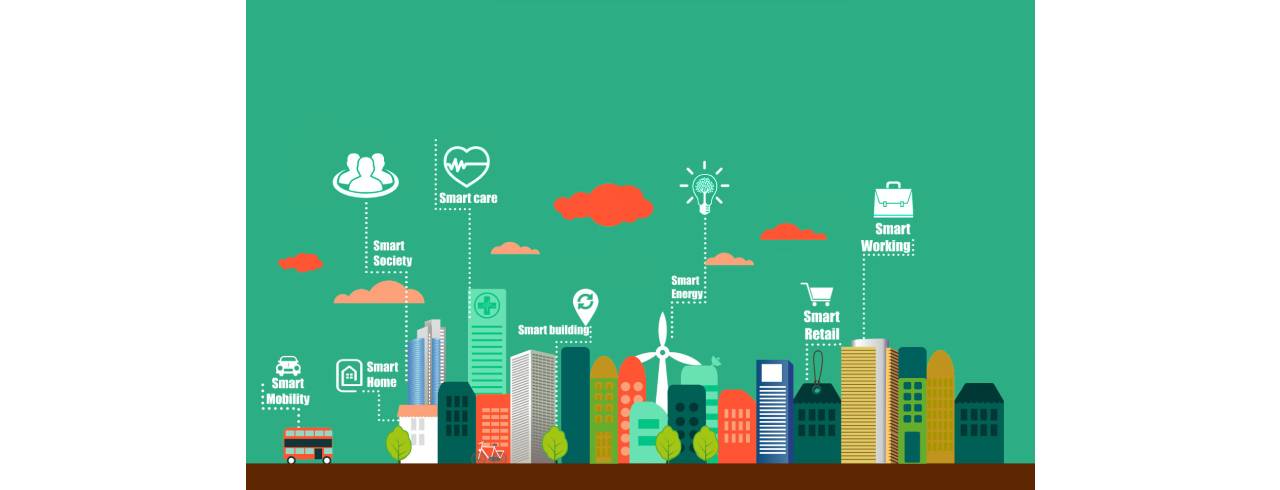Millions of smart meters may be connected in a reliable, secure, and cost-effective manner using Low Power Wide Area Network (LPWAN) technology. This allows utilities to grow their company through Internet of Things (IoT) applications for smart cities and towns. It also makes it simple for smart IoT devices to join a network. With easily available data that can provide actionable insights, LPWAN can assist utility providers in reducing costs, enhancing safety, minimizing waste, and enhancing customer happiness.

Specifically designed for low-power sensor networks and based on Semtech's LoRa® modulation technology, the LoRaWAN Module for Smart City is progressively used within sub-stations for fault identification and smart grid surveillance in remote locations to monitor equipment and provide data on system performance. Leveraging wireless sensor nodes with battery backup can provide crucial information and even identify when equipment will break, allowing replacements to be performed as part of routine maintenance rather than waiting for a potentially catastrophic failure.
As a result of LoRaWAN's lower power consumption, wireless sensor node batteries can persist for many years without having to be replaced frequently, which can be expensive and complicate large-scale data-capture deployments.
Undoubtedly, one of the most important requirements is to protect user data. AES 128-bit encryption keys are used in the embedded two-layer security system for the LoRaWAN network, designed for low-power communication networks. As a result, information can be protected from smart meters up to enterprise data systems. Data does not need to be converted because LoRa packets do not use the IP protocol and may be implemented end-to-end without compromising security.
Supporting the most crucial protocols for data and applications related to smart meters is one of the industry's problems. The LoRa Alliance and other key associations are actively supporting the definition of metering standards to enable meter interoperability and give certification of compliance, which is how this problem is being handled. Then, utilities may rely on metering software standards running on LoRaWAN networks. Several businesses in the LoRa Alliance employ LoRaWAN, which is now a widely accepted standard under the name Y.4480 from the ITU Telecommunication Standardization Sector (ITU-T).
With LoRaWAN, utilities can maintain the same data format and OMS application layer as wireless Mbus connectivity while benefitting significantly lower power consumption, better long-range connectivity, and deeper indoor penetration. This is especially appropriate for battery-powered meters, frequently placed in concrete, deep underground, or in other difficult-to-reach locations. Another advantage of LoRaWAN is the potential for firmware upgrades over the air, or FUOTA, as defined by the LoRa Alliance.
OMS has created a new specification to guarantee compatibility with existing OMS-based systems. Utility companies can choose from various network models, including private, public, and hybrid. Rather than incurring the high costs of setting up and maintaining radio network infrastructure, utilities can use LoRaWAN network service providers that are accessible. Rather than incurring the high costs of setting up and maintaining radio network infrastructure, utilities can use LoRaWAN network service providers that are accessible.
Similarly, for the international market, multi-metering, and other uses, the LoRa Alliance collaborated with the Device Language Message Specification (DLMS) user association on a new communication profile to enable the DLMS specified by ISO/IEC (IEC62056 standard). For interoperable data interchange with all types of smart devices for utilities, DLMS defines the semantics and syntax of a language.
The DLMS/Companion Standard for Energy Metering, primarily used for power metering, has seen widespread adoption (COSEM). Around the world, more than a few hundred million electric meters use DLMS. DLMS over LoRaWAN is enabled easily by using IPv6 and UDP internet protocols from end-to-end rather than a bridge to transfer the data, which would result in a non-standard installation.
A standard adaption layer established by the IETF (in RFC8724 and RFC9011) employing the Static Context Header Compression (SCHC) technology makes fragmentation and compression necessary to deliver UDP packets possible.
Data integration from various meters formerly in different silos, such as smart electric and water meters, is also made much simpler by using a single application standard, such as DLMS, for numerous applications.
Direct satellite connection is a cutting-edge innovation that can help utilities even more. To transport data in almost real-time from all over the world, satellites have been deployed with payloads that can handle LPWAN communications directly. The desired LPWAN modulation can be implemented by a satellite operator's own Software Defined Radio system (SDR) or by reusing terrestrial gateway technologies. Enterprise users now have more alternatives for network and analytic engines thanks to the introduction of numerous satellite LPWAN networks or those already launched. This raises the volume, intensifies competition, and brings costs down.
A constantly expanding range of cost-saving solutions for smart cities and communities includes smart monitoring, data collection, and analysis improvements.